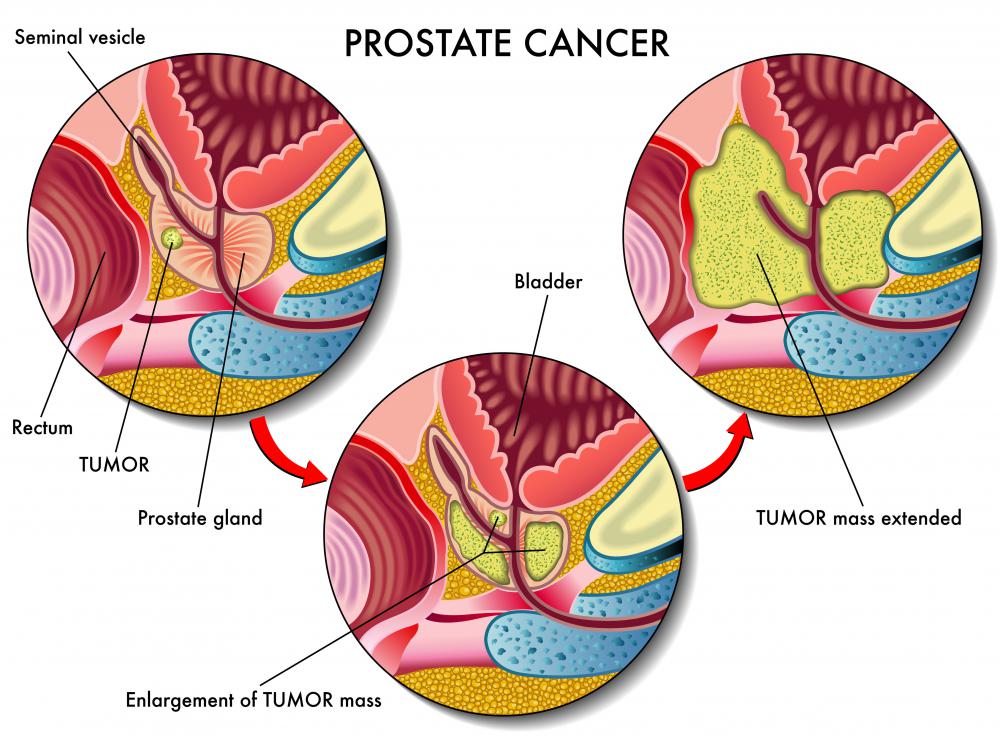At TheHealthBoard, we're committed to delivering accurate, trustworthy information. Our expert-authored content is rigorously fact-checked and sourced from credible authorities. Discover how we uphold the highest standards in providing you with reliable knowledge.
What is Amylacea?
Amylacea is a Latinate biological word from the Greek amylon, which means 'starchy.' It is most commonly used in the medical term corpora amylacea, which are calcium growths formed from the build-up of protein-laced fluid over time. They can range in color from pink to purple to orange, and have a glass-like appearance. They are also usually round in shape. Corpora amylacea, sometimes called hyaline masses, are found in the prostate, neuroglia, and pulmonary alveoli. They are usually about 15 microns in diameter and are often identified microscopically.
Corpora amylacea in the prostate are usually found in men over 60 years of age. The prostate is a small, walnut-sized gland that wraps around the urethra. These calcium build-ups are usually benign, but can cause problems like pain during urination when they grow too large. Hyaline masses in the prostate are also called prostate stones. Overgrown masses can also lead to hyperplasia, which is the swelling of the prostate. Doctors will normally treat the symptoms of hyperplasia, but in extreme cases part of the prostate is removed to decrease its size and pressure on the urethra.

Hyaline masses are rarely found in patients with prostate cancer. For this reason doctors often use their presence to rule out cancer. It is important to note that, in rare instances, corpora amylacea in the prostate are present with cancerous cells so thorough tests are still necessary to completely rule out malignancy.
Neuroglia, also called glial cells, can also contain corpora amylacea. Glial cells are important to the brain because they protect neurons, which are responsible for sending and translating information. Like these masses in the prostate, they are also associated with an aging brain. This is because it takes time for significant build-ups of calcium to form. They are especially common in the brain of elderly dementia patients.

The pulmonary alveoli of the lungs can also contain hyaline masses. An extremely rare disease, caused by this calcium build-up in the lungs, is called pulmonary alveolar microlithiasis, which is characterized by extreme calcification of the lungs. This condition progresses slowly and its symptoms are mild, but include chest pain and difficulty breathing. Doctors do not know what causes the huge calcium deposits necessary to cause this disease. In most cases corpora amylacea of the lungs is asymptomatic and only discovered during autopsies.
AS FEATURED ON:
AS FEATURED ON:
















Discuss this Article
Post your comments